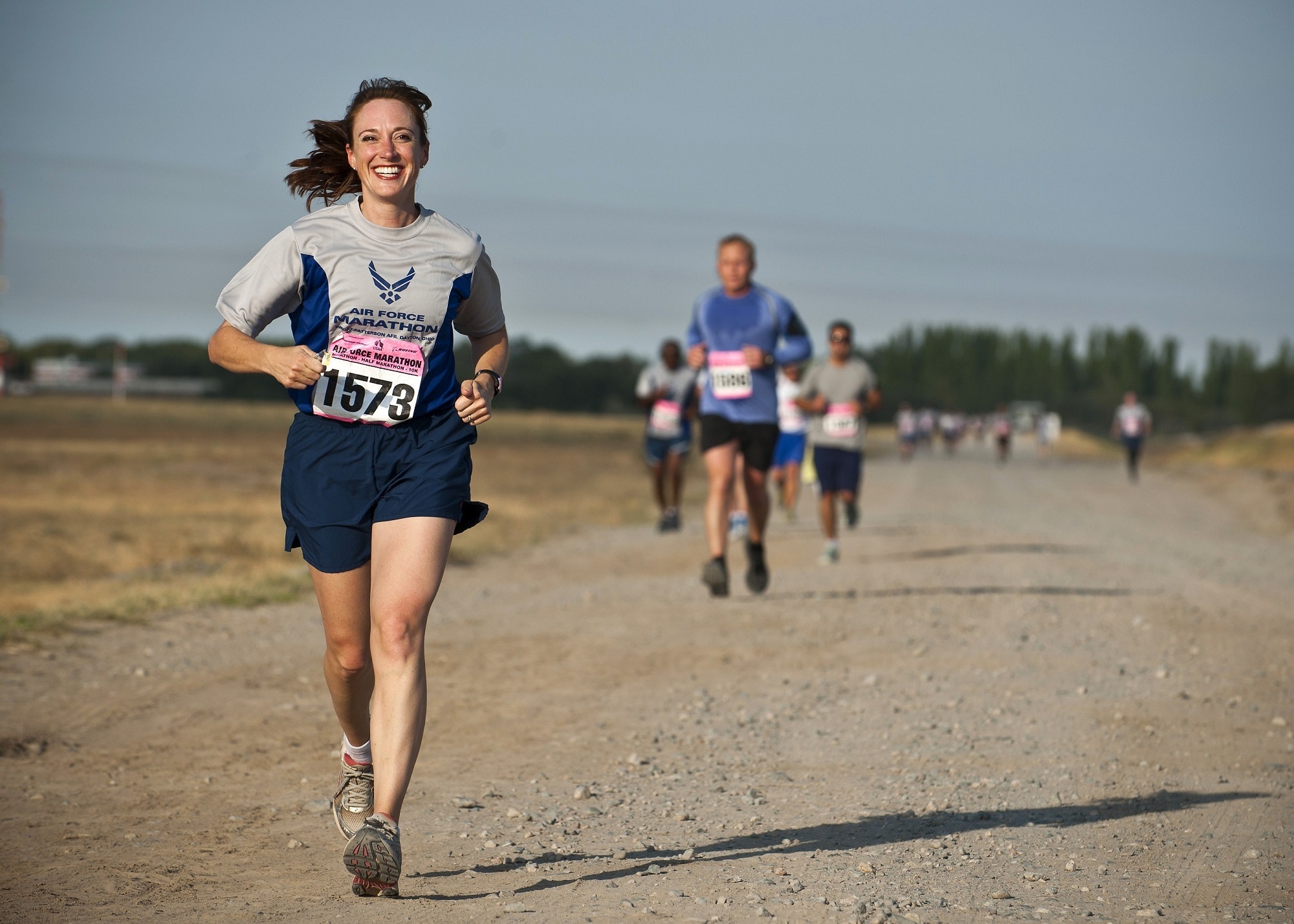- +919811164692
- hello@gofitnessacademy.in

TRAIN YOURSELF FOR MARATHON
For some sprinters, the longing to complete a long distance race is about close to the home test. You should need to test your cutoff points or demonstrate that you can take care of business. Maybe a companion has talked you into it. Perhaps you'd like to get in shape, get more advantageous or bring issues to light for philanthropy.
Whatever your reason, clutch it and help yourself to remember it frequently amid the months that lie ahead. At the point when your legs are worn out, or the climate is frightful, keeping up your inspiration will enable you to get out the entryway.
Beginning
Know about your cutoff points. The 26.2 miles in a long distance race put you at an essentially higher hazard for damage than your everyday neighbourhood runs. Counsel with your doctor before leaving on any preparation program.
Begin early: Conventional knowledge suggests that hopeful long distance runners run predictable base mileage for somewhere around a year before setting out on a long distance race preparing the program.
A standout amongst the most widely recognised reasons for damage is constructing week by week mileage too early, excessively quick—so don't belittle the significance of reliably running at any rate 20– 30 miles per week routinely before focusing on preparing for a long distance race
Picking a First Marathon
Long distance races go from peaceful, relaxed races on backwoods streets to onlooker fixed urban races with a huge number of sprinters. To enable you to become accustomed to the race vibe and distinguish your inclination, run a couple of shorter races, applaud a companion or volunteer at long distance races.
Picking a long distance race near and dear may offer a 'home field advantage' with the chance to keep running on natural streets; then again, picking a 'goal' race can truly feed your inspiration fire in the months paving the way to race day.
The Four Building Blocks of Marathon Training
The essential components of long-distance race preparing are:
Base Mileage
Most long-distance race preparing plans extend from 12 to 20 weeks. Starting long-distance runners should mean to develop their week by week mileage to 50 miles over the four months paving the way to race day.
Three-to-five runs for each week is adequate. By far most of these runs ought to be done at a casual pace. You should keep running at a simple enough pace to most likely carry on a discussion.
The Long Run
Your following stage is to develop to week by a week-long run. This ought to be done once every 7– 10 days, broadening the long kept running by a mile or two every week. Like clockwork, scale it back by a couple of miles so as not to overburden your body and hazard damage. For instance, you may run 12 miles one end of the week, 13 miles the following, at that point 14 miles, and afterwards, 12 again before proceeding onward to 15 on the fifth end of the week.
Doing these keeps running at a generously slower pace than common forms certainty, gives your body a chance to acclimate to longer separations, and instructs you to consume fat for fuel.
Speed Work
Speed work is a discretionary component to fuse into your preparation program. It can build your high-impact limit and make your simple runs feel… well, simple! Interims and rhythm runs are the most mainstream types of speed work.
Interims are a lot of reiterations of a particular, short separation, keep running at a significantly quicker pace than expected, with recuperation runs in the middle. For instance, you may run 4 X 1-mile rehashes at a hard pace, with 5 minutes of moderate running or notwithstanding strolling between the mile rehashes.
Rest and Recovery
Rest days mean no running. They let your muscles recoup from burdening exercises and help forestall mental burnout. The best foe of any hopeful long distance runners is damage, and the best insurance against damage is rest.
CONCLUSION
On the off chance that you are tingling to accomplish something dynamic on your rest days, doing some broadly educating is an extraordinary alternative. Broadly educating can incorporate strolling, climbing, cycling, swimming, yoga, lifting loads, or whatever other dynamic interest that isn't as high-sway as running.
Blog Written by PayalMadanArora